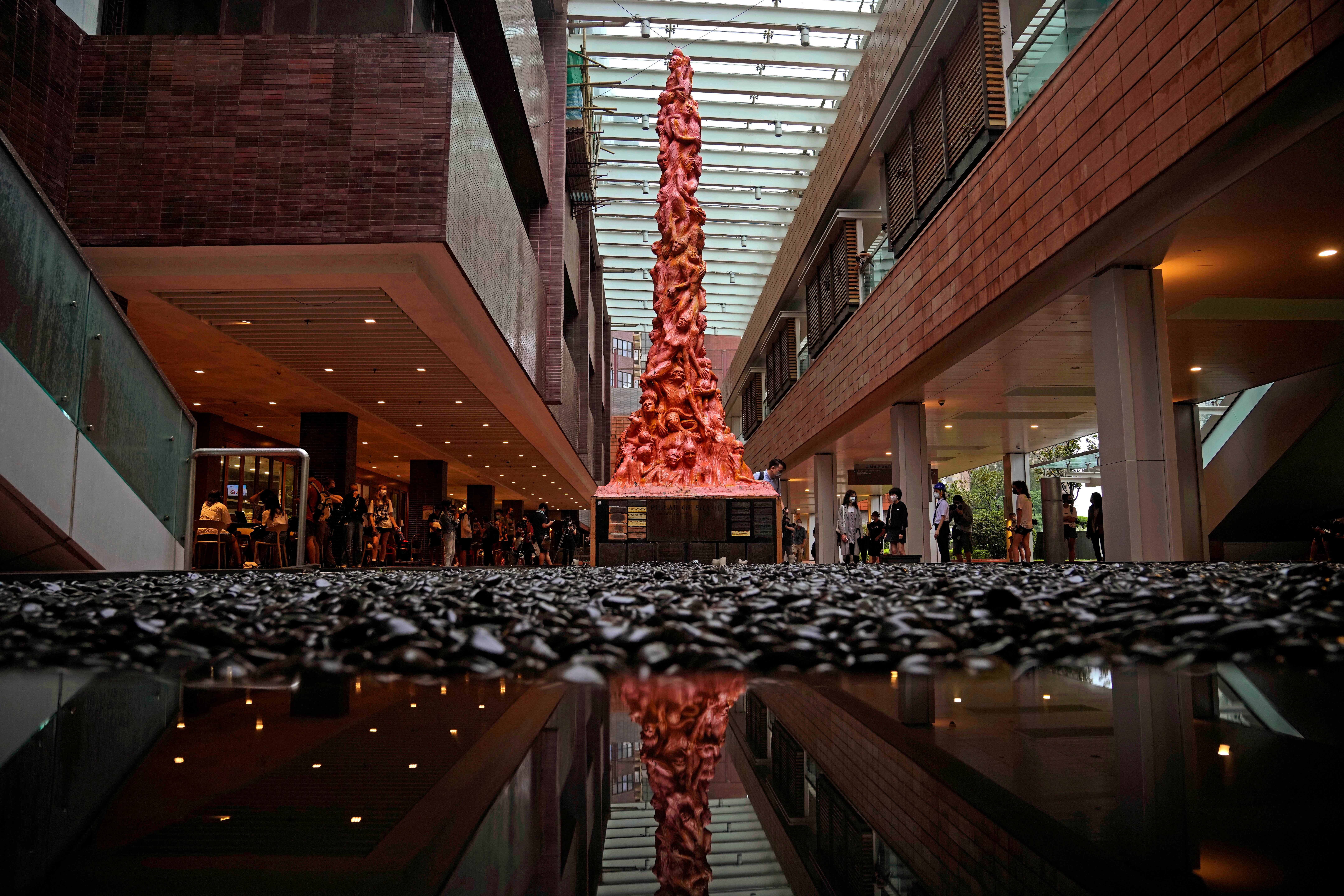Tiananmen massacre statue barricaded at Hong Kong university
A monument at a Hong Kong university that commemorated the 1989 Tiananmen massacre was boarded up by workers late Wednesday, prompting fears over the future of the monument as the city’s authorities crack down on dissent

Your support helps us to tell the story
From reproductive rights to climate change to Big Tech, The Independent is on the ground when the story is developing. Whether it's investigating the financials of Elon Musk's pro-Trump PAC or producing our latest documentary, 'The A Word', which shines a light on the American women fighting for reproductive rights, we know how important it is to parse out the facts from the messaging.
At such a critical moment in US history, we need reporters on the ground. Your donation allows us to keep sending journalists to speak to both sides of the story.
The Independent is trusted by Americans across the entire political spectrum. And unlike many other quality news outlets, we choose not to lock Americans out of our reporting and analysis with paywalls. We believe quality journalism should be available to everyone, paid for by those who can afford it.
Your support makes all the difference.A monument at a Hong Kong university that commemorated the 1989 Tiananmen massacre was boarded up by workers late Wednesday, prompting fears over the future of the monument as the city’s authorities crack down on dissent.
The 26-foot (7.92-meter) tall Pillar of Shame, which depicts 50 torn and twisted bodies piled on top of each other, was created by Danish sculptor Jens Galschiøt to symbolize those that lost their lives during the bloody military crackdown on pro-democracy protesters in Beijing’s Tiananmen Square on June 4, 1989.
But the statue became an issue of dispute in October, with the university demanding that it be removed, even as the move has drawn backlash from activists and rights groups. Galschiøt, the creator of the statue, had offered to take the statue back to Denmark provided he was given legal immunity from the national security law, but has not succeeded so far.
Workers barricaded the Pillar of Shame monument at the University of Hong Kong late Wednesday night. Drilling sounds and loud clanging could be heard coming from the boarded-up site, which was patrolled by guards.
In October, the university informed the now-defunct candlelight vigil organizer Hong Kong Alliance in Support of Patriotic Democratic Movements of China that it had to remove the statue following “the latest risk assessment and legal advice.”
But the organization had said that it was dissolving and that it did not own the sculpture. The university was told to speak to its creator instead.
When reached by The Associated Press, sculptor Galschiøt said he was unaware of what was happening to the sculpture Wednesday.
He had previously written to the university to assert his ownership of the monument, although his requests had gone largely ignored. He had also previously warned the university that he could seek damages if the statue was damaged during its removal.
The dispute over the Pillar of Shame comes as Hong Kong authorities crack down on political dissent in the city, following the implementation of a national security law that appeared to target much of the pro-democracy movement.
The security law, which outlaws secession, subversion, terrorism and foreign collusion to intervene in the city’s affairs, was imposed by Beijing on Hong Kong following months of anti-government protests in 2019.
Over 100 pro-democracy figures and activists have been arrested under the national security law, which has been criticized as rolling back freedoms promised to Hong Kong when it was handed over to China by the British.
The University of Hong Kong did not immediately respond to enquiries from the AP.
The Pillar of Shame monument has been erected for over two decades, and initially stood at Hong Kong’s Victoria Park before eventually being moved to the University of Hong Kong on a long-term basis.
Each year on June 4, members of the now-defunct candlelight vigil organizer HKU student union would wash the statue to commemorate the Tiananmen massacre. The city, together with Macao, were previously the only places on Chinese soil where commemoration of the Tiananmen crackdown was allowed.
Over the past two years, the annual candlelight vigil in Hong Kong had been banned by authorities, who cited public risks from the coronavirus pandemic.
Some 24 activists were charged for their roles in the Tiananmen vigil last year, during which activists turned up and thousands followed, breaking past barricades in the park to sing songs and light candles despite the police ban on the event.